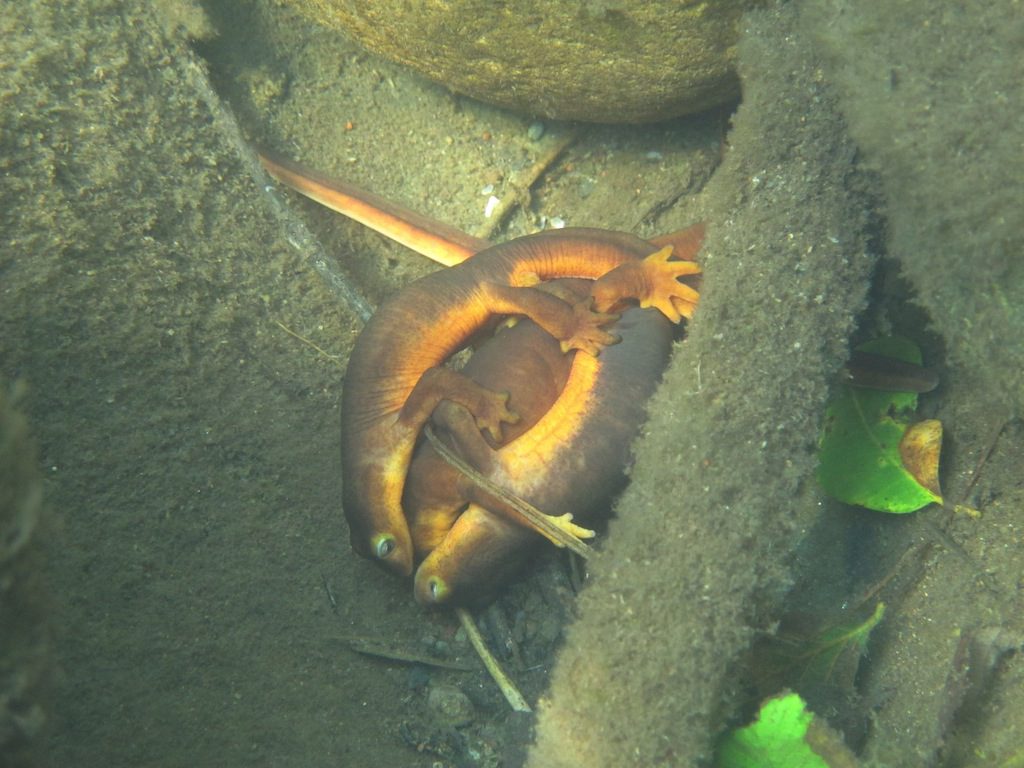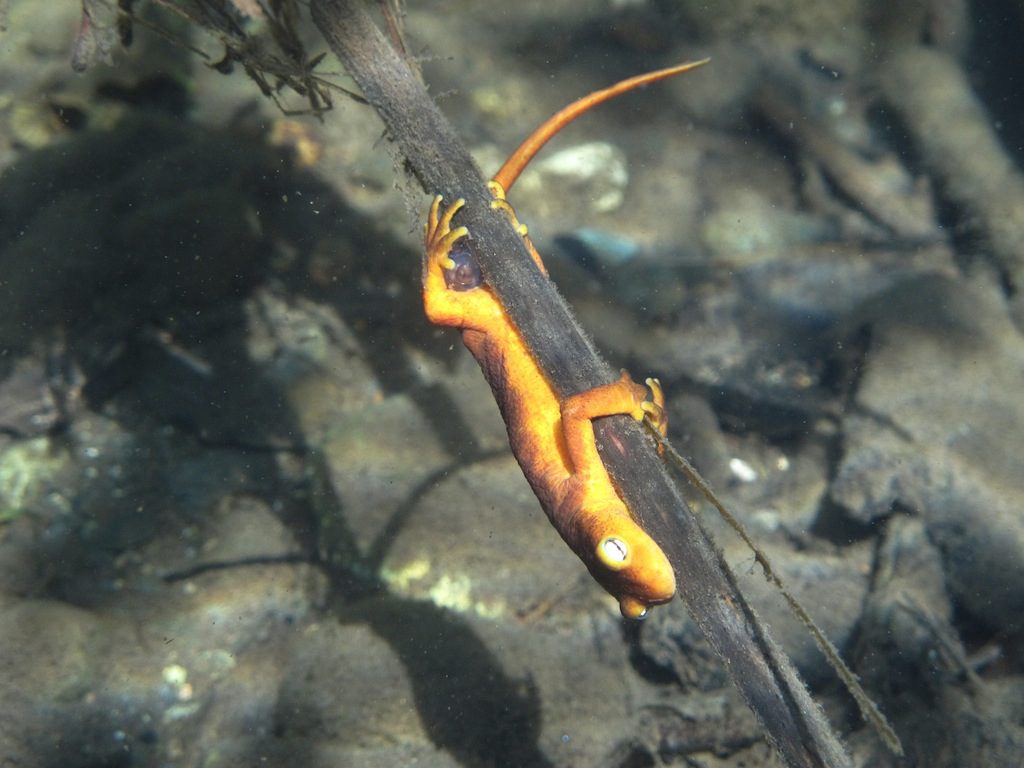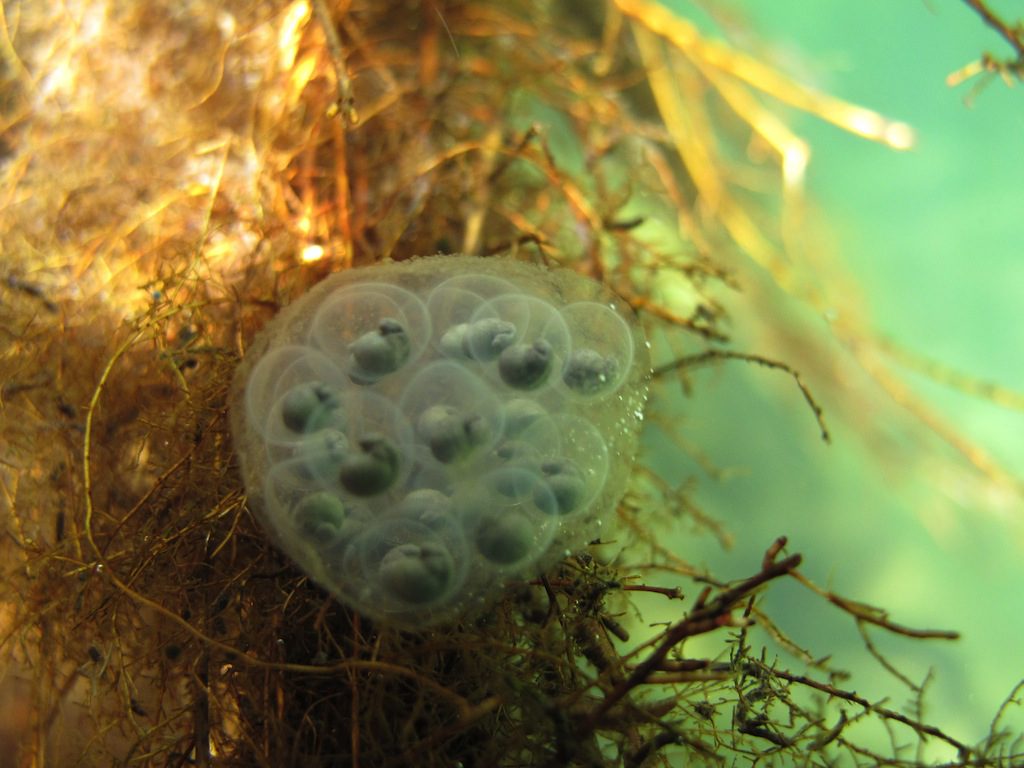Friday February 13, 2015

When love is in the air for Sierra newts (Taricha sierrae), these otherwise land-dwelling amphibians know it’s time to hit the water. After adult newts reach about three years of age, they traipse overland in January and February to find their breeding streams in search of that special someone. Sierra newts can migrate for impressive distances, sometimes covering multiple miles to seek out the right stream, and usually return to the same stream each time they reproduce. Reproduction then occurs between March and May. Upon entering water, these typically terrestrial newts undergo a transformation to become sleek swimmers. In this “aquatic phase,” the males’ usually rough and grainy skin turns smooth, and their tails flatten into waving streamers to improve their underwater mobility. Females undergo similar changes to a lesser extent. Males also sprout rough “nuptial pads” at the tips of their toes for a better grip on a squirming female for mating.

Newt reproductive behavior is called amplexus, in which a male grabs the female from above. Sometimes multiple males will mob a single female while jockeying for the prime position, as seen in the top photo. After spending as long as an hour or more grasping the female (sometimes while she carries him around), the male dismounts and deposits a packet of genetic material called a spermatophore onto the river bottom. The female picks up the spermatophore with her cloaca, or reproductive opening, to fertilize her eggs, and can collect multiple spermatophores in a breeding season (Davis and Twitty 1964). She will later deposit a gelatinous mass of globular fertilized eggs on stones or other structures. Each egg mass can contain between seven and 47 eggs, and a single female can lay between three and six egg masses.

Working so closely in nature often gives us a front-row seat to observe such interesting behaviors firsthand. One of our biologists snapped these photos of a wriggling ball of newts (or an amplexus in action), of a female newt laying eggs, and of a newt egg mass while in the field last spring. You can watch a video of Sierra newt mating behavior in Yosemite National Park to catch a glimpse of the underwater antics of these intriguing animals.
